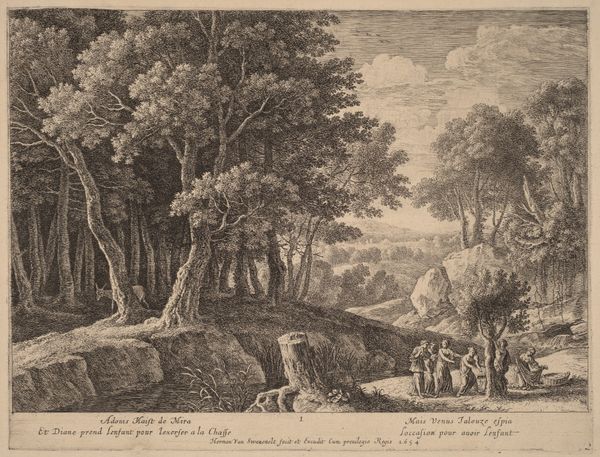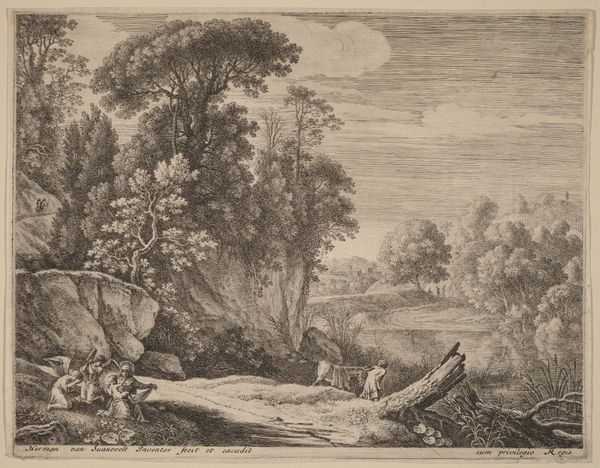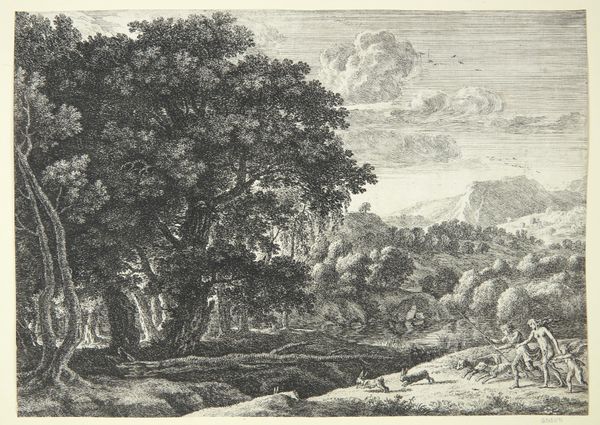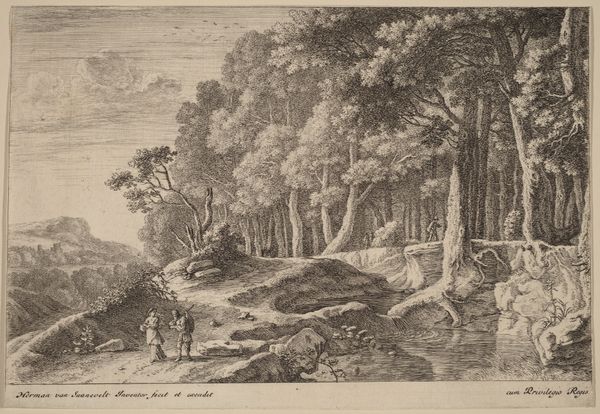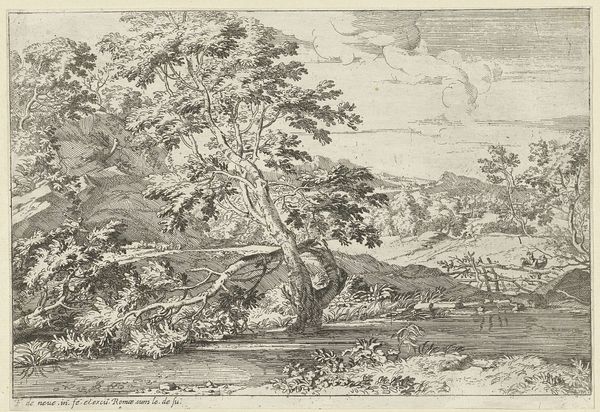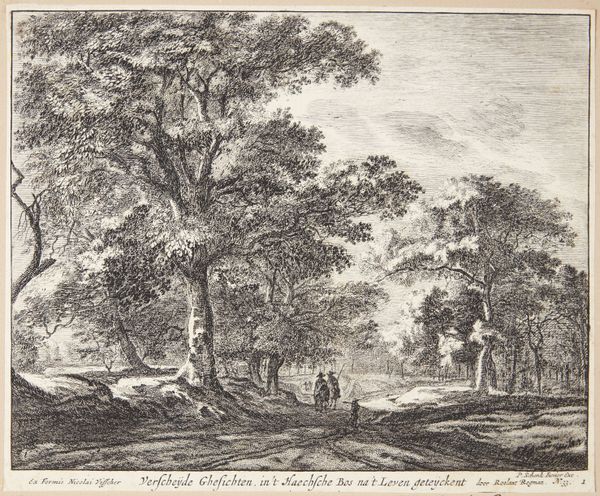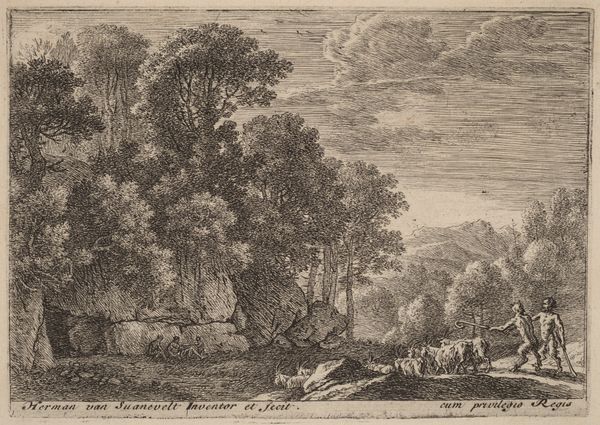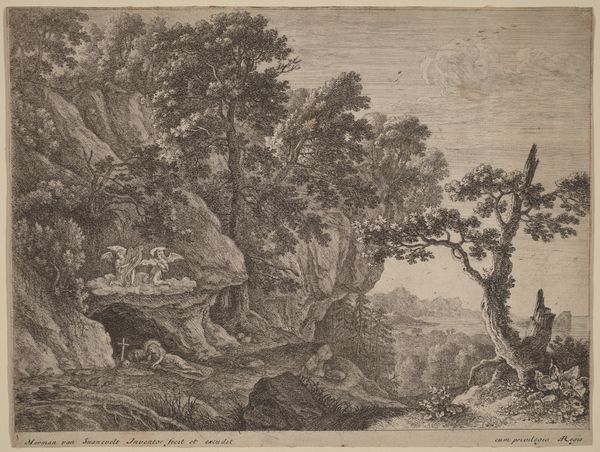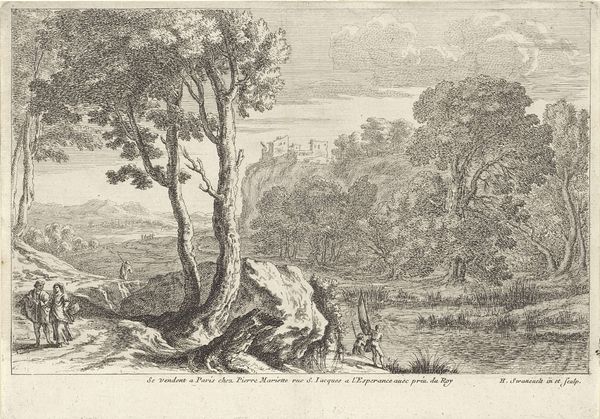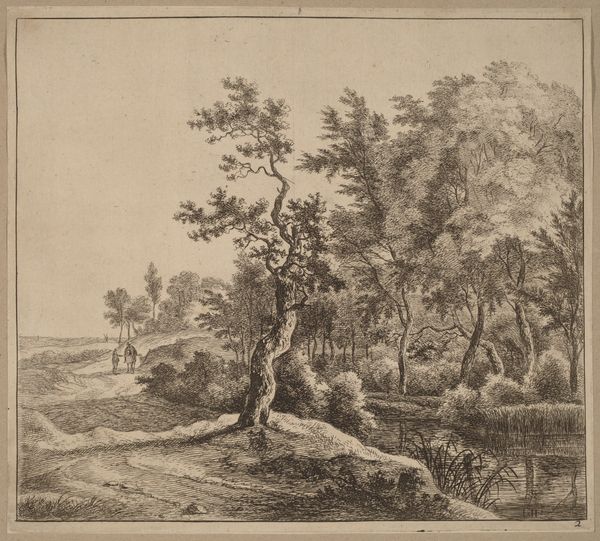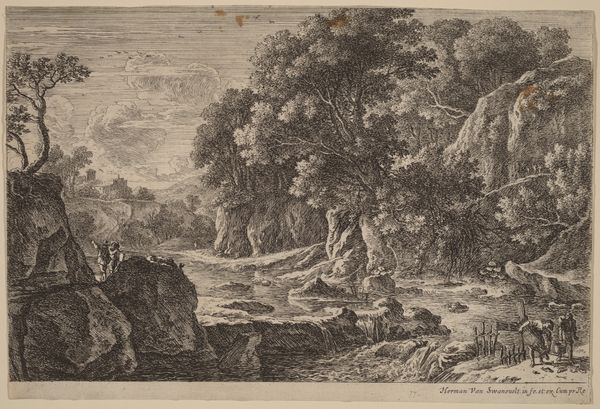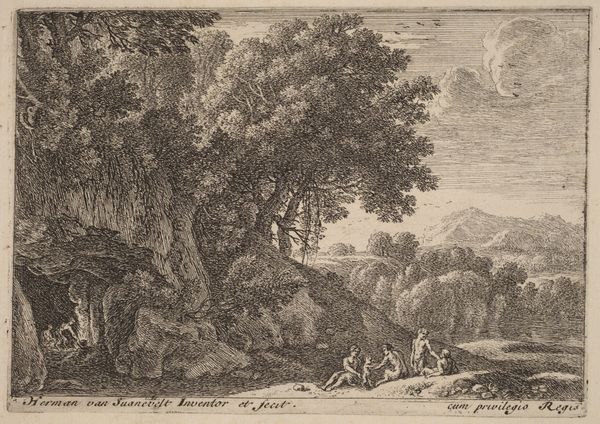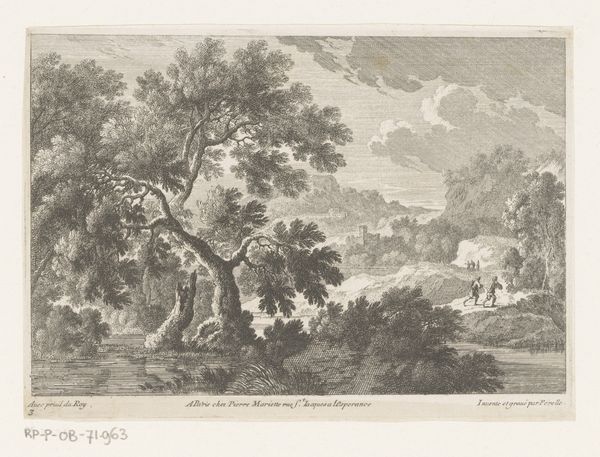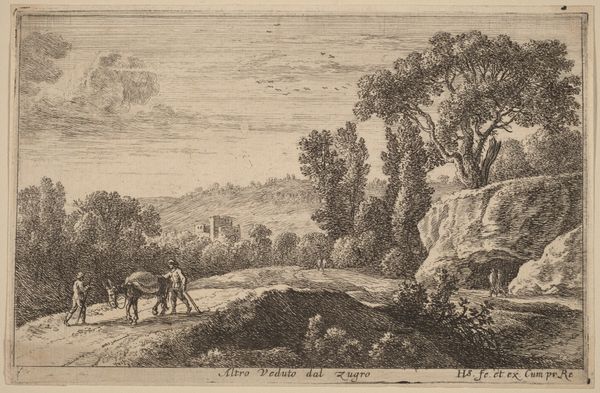
print, etching, engraving
#
baroque
# print
#
etching
#
landscape
#
history-painting
#
engraving
Copyright: National Gallery of Art: CC0 1.0
This is Venus and Adonis Hunting, an etching made in 1654 by Herman van Swanevelt. As an etching, this work begins with a metal plate, likely copper, coated with a waxy ground. The artist then draws through this ground with a needle, exposing the metal. The plate is then immersed in acid, which bites into the exposed lines, creating grooves. Ink is applied to the plate, filling these grooves, and the surface is wiped clean. Finally, the plate is pressed onto paper, transferring the ink and creating the print we see here. The resulting image is characterized by fine, precise lines and subtle tonal variations, achieved through varying the density and depth of the etched lines. This printmaking process allowed for the creation of multiple identical images, democratizing art and enabling wider distribution. The labor-intensive nature of etching, from preparing the plate to printing the final image, speaks to the value placed on skilled craftsmanship. This challenges traditional distinctions between fine art and craft, highlighting the artistry inherent in the printmaking process itself.
Comments
No comments
Be the first to comment and join the conversation on the ultimate creative platform.
